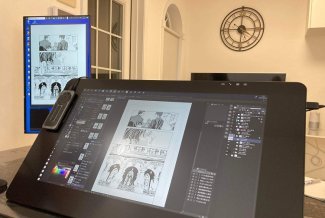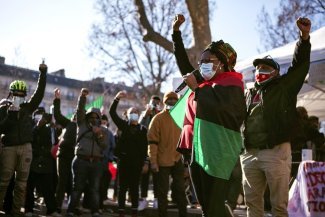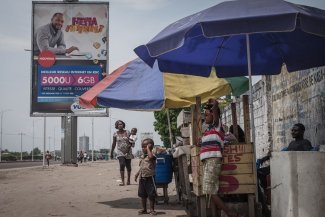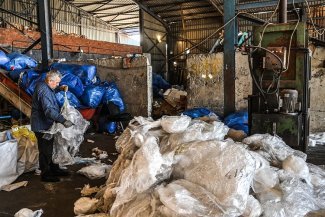Precarious work (exemplified by short term contracts, subcontracting and worker misclassification) is on the rise worldwide.
The result of employment practices meant to maximise short-term profitability and flexibility at the expense of the worker by destabilising the employment relationship, precarious work significantly undermines wages and working conditions.
It also strikes at the core of trade union rights, as precarious workers find it difficult, if not impossible, to organise with fellow workers to form or join a union at the same enterprise (they will not have the same employer where subcontracting is employed) or in the same sector.
In some cases, governments are promoting these practices by failing to properly enforce laws or by revising laws to facilitate the expansion of precarious work.
But while precarious employment has always been a serious problem in the developing world, it is becoming an increasingly serious problem in highly-industrialised countries where well-paying, full-time jobs are becoming more and scarce.
Take Korea for example. Government statistics reveal that over one-third of the workforce is now labouring under some form of ‘non-regular’ work arrangement, though unions allege that the number is closer to half.
This has created a two-tiered labour market – and society – with little chance for mobility.
Precarious workers in Korea earn roughly 40 per cent less than regular workers doing the same or similar work. Korean women are also disproportionately affected by precarious work.
Though this has been a serious problem since the 1990s, the International Monetary Fund (IMF) is finally raising the alarm.
In a speech delivered at Seoul National University on 5 December, 2013, IMF Managing Director Christine Lagarde stated: “A key problem [in the labour market] is duality. Regular workers have high levels of job protection and decent wages and benefits. Non-regular—or temporary or part-time—workers have low wages, little employment security, inadequate training, and weak social insurance coverage.”
She also noted that the participation of Korean women in the labour force is the lowest in the OECD, at about 60 per cent in comparison to 83 per cent of Korean men.
The gender earnings gap is also the highest in the OECD.
Indeed, the ILO Committee of Experts has also suggested that the concentration of women in precarious forms of employment may violate the country’s obligations under ILO Convention 111 on employment discrimination and has urged the government to take “the necessary measures” to protect precarious workers – particularly women – from discrimination.
The faces of precarious work in Korea
Precarious work is found everywhere in Korea, from manufacturing to IT services to education. Below are just three examples where trade unions are working to fight against it.
Incheon Airport: Subcontracting companies are frequently used in operations at Incheon Airport – the country’s largest – with roughly 87 per cent of airport workers employed through subcontractors.
These workers are paid a fraction of the rate of directly employed workers and, many don’t even receive the full amount the airport pays to the intermediary for their labour.
The Korean Public services and Transportation Worker’s Unions (KPTU) Incheon Airport Regional Branch was established in 2011 to organise subcontracted workers employed by first-tier subcontractors. These subcontracted workers mainly work in areas such as traffic management, security, civil engineering, cleaning and property services.
Since 2011, some 1,700 out of approximately 6,000 subcontracted workers at Incheon airport have been organised into the branch. The union is now on an indefinite strike to protest the use of precarious forms of work at the airport.
Watch the interview of the International Trade Union Confederation (ITUC) with Lee, Myeong-han, organising director for the union.
Hyundai Motors: Hyundai Motors, the world’s fourth largest car maker, maintains assembly lines where some of the employees are directly employed by Hyundai while others, performing the same work, are hired through an intermediary.
These workers often face more gruelling working conditions and are paid substantially less and with fewer benefits.
A worker sued Hyundai claiming that the company was engaged in illegal dispatch and should be treated as a regular, directly employed worker. Despite having won the case before the Supreme Court in 2012, the company still refuses to respect the order as to him or any of the thousands of similarly situated workers in the company. The Korean Metal Workers Union (KMWU) has organised some of the precarious workers at the company’s Ulsan plant.
Watch the ITUC’s interview with Park, Hyeon-je, local chair of the KMWU Hyundai Branch.
Hyundai Heavy Industries (HHI): the use of precarious work in the shipyards of the international port of Ulsan is commonplace.
Massive ships are not built by directly employed workforces built instead by dozens of separate crews, each headed by a subcontracted employer, which are responsible for a section of the ship. The pay is very low and workers are often frightened to report injuries on the job, which are common, for fear of losing their jobs.
Efforts to unionise were crushed in the past, though workers are trying to rebuild despite fears of blacklisting preventing many workers from joining a union.
Watch the ITUC’s interview with Ha, Chang-min, chair of the KMWU HHI Local Branch, standing in front of a mural of the union’s founder, who self-immolated to raise the consciousness of the workers in the shipyards.
Combatting precarious work is a priority for the ITUC and ITUC-Asia Pacific.
In 2014, the ITUC and ITUC-AP will launch a report on precarious work in Asia, highlighting the laws and practices throughout the region that lead to the exploitation of workers.
The ITUC also plans to join up with Global Unions to launch campaigns in target countries to reform legislation and to change industrial relations practices at specific companies.
The continued exploitation of workers through precarious forms of employment must be stopped.
We need legislation that protects workers from being undermined, and the enforcement of labour rights for all workers – regardless of the type of employment.
At the same time, unions will continue to organise and negotiate collective agreements that ban or put defined limits on its use.









